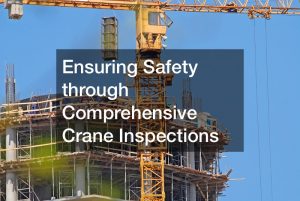
Crane operations are vital across various industries, facilitating heavy lifting and maneuvering tasks. However, recent incidents underscore the critical importance of rigorous and thorough crane inspections to maintain safety standards and prevent catastrophic failures.
In one case, a crane failed due to overloading, exacerbated by pre-existing cracks in a known weak spot—the turret’s top plate. Despite an annual inspection by an engineering firm that was aware of this vulnerability, a comprehensive examination of the top plate was overlooked, leading to a certified crane with several deficiencies.
Fortunately, no injuries occurred, emphasizing the significance of diligent crane inspections.
In another alarming incident, a crane’s subframe became loose during operation, resulting in a fatal accident. The laxity in re-torquing bolts, as required every six months, and neglected tack welds on spacer plates were crucial oversights. Even during the annual inspection, these issues were not adequately identified, highlighting the need for more stringent examination protocols.
Why Crane Inspections Matter
These cases underscore that lives depend on meticulous crane inspections. Following manufacturer instructions for maintenance and inspections, conducting daily, weekly, monthly, and periodic checks, and ensuring an annual inspection by a qualified engineer are paramount. These measures certify cranes as “safe for use” and confirm the structural, mechanical, and control systems’ integrity, emphasizing the life-saving importance of robust crane inspection practices.
.





